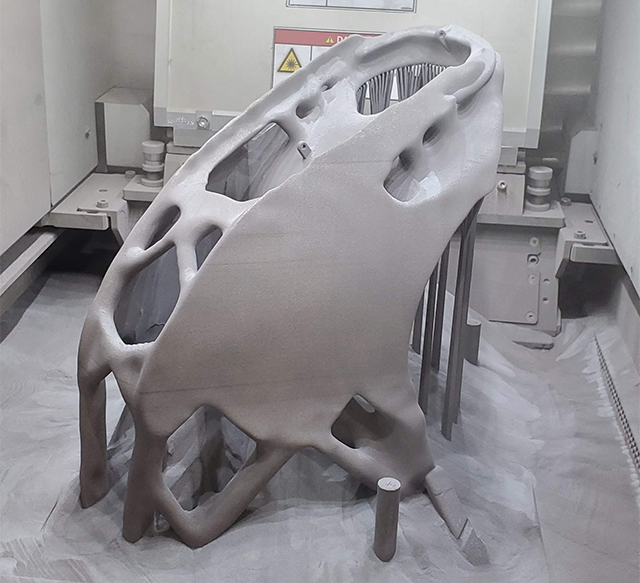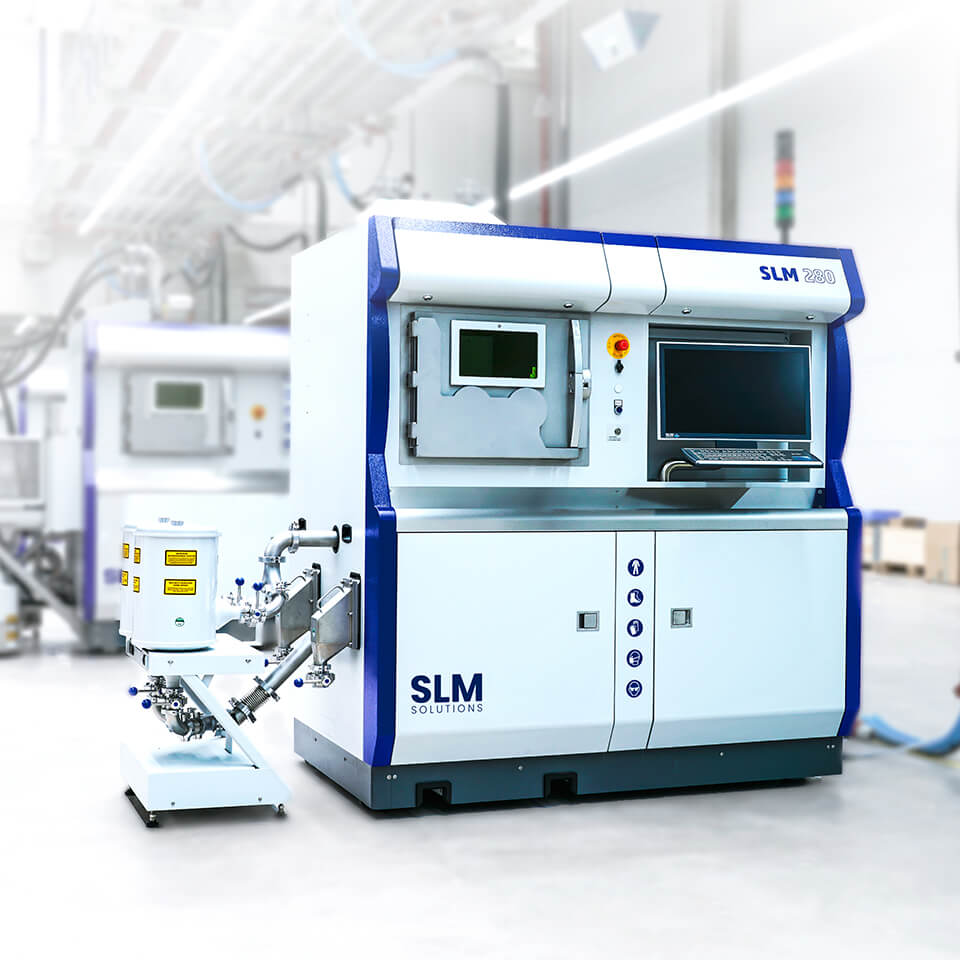The 2021 3D Printing Industry Awards shortlists are now open for voting until the 20th of October. Cast your votes here.
Additive manufacturing materials developer Uniformity Labs has 3D printed a roll cage for a solar-powered race car using its ultra-low porosity AlSi10Mg aluminum alloy powder.
Printed in-house on an SLM Solutions SLM 280 2.0, the roll cage is set to be used in the upcoming Bridgestone World Solar Challenge, a 3000km race that sees solar-powered cars duke it out in the Australian outback. Optimized using topology optimization techniques, the roll cage was made to be as strong and as light as possible for maximum performance.
“This is an excellent example of how our innovation can significantly improve part design using our advanced powders and modern AM techniques,” said Adam Hopkins, founder and CEO of Uniformity Labs. “Our ultra-low porosity AlSi10Mg and print processes allowed the car development team to create a better part quickly, cheaply, and optimized for the necessary weight and safety parameters.”

3D printing with AlSi10Mg
Roll cages are specially designed frames that line the interiors of race cars. They’re implemented in a bid to protect the driver (and passengers) from being injured in the case of an accident, particularly one that involves the car rolling over. As such, it’s crucial that roll cages are able to withstand high-stress impacts without buckling, calling for the use of high-strength materials.
The 3D printed roll cage was enabled by Uniformity Labs’ AlSi10Mg, an age-hardening aluminum alloy with excellent hardness, strength, and toughness. Although it’s traditionally used as a casting alloy, AlSi10Mg is also commonly used in additive manufacturing due to its corrosion resistance and high strength-to-weight ratio, which make it a great choice for thin walls and complex geometry parts.
Printed on an SLM 280 2.0, the powder alloy can achieve part densities of up to 99.9%, ultimate tensile strengths of up to 438MPa, and yield strengths of up to 291MPa.
Layers down to 30 microns
Uniformity Labs chose to print the roll cage with a layer thickness of 30 microns, as this gave the part a high-quality surface finish. Since AlSi10Mg is marketed as a high-throughput material, the build was completed at high speeds, about as fast as a comparable 60 micron layer thickness print.
The cost and material performance were key factors in the success of the project, so the engineering team behind the car employed topology optimization when designing the roll cage itself. By calculating the expected loads of the cage, they were able to generatively design a geometry that was well suited to handling them, removing any unnecessary material in the process for a light, strong, and cost-effective build.
Uniformity Labs also believes the project has demonstrated the advantages of its aluminum alloy when it comes to furthering the future of sustainable mobility. The company maintains that robust and lightweight parts will be required to accelerate the transition to cleaner and safer mobility systems, and materials like AlSi10Mg will enable them.
“It’s easy to see how the processes used, and benefits afforded to the roll-cage production can apply to the creation of complex parts for use in mainstream industries such as aviation, auto, and consumer electronics,” Hopkins continued. “That’s what our technology is all about.”

Companies operating in the motorsport sector have seen a great deal of 3D printing adoption over the past few years. For example, the Kawasaki Puccetti Racing team recently integrated 3D scanning and 3D printing into its day-to-day workflows, revealing that it used additive manufacturing to win the World Superbike Championship in Italy in 2019. The team used a RangeVision 3D scanner to scan its Kawasaki racing motorcycle and optimized the fairing of the 3D model using aerodynamic modeling algorithms.
More recently, the Alfa Romeo Racing ORLEN Formula One team partnered with AM Solutions, the Italian 3D printing subsidiary of the Rösler Group, to bolster the post-processing of its 3D printed race car components. Having acquired three S1 systems from AM Solutions, Alfa Romeo will be able to deploy partial and fully automated post-processing of polymer and metal 3D printed parts for “all 3D printing technologies”.
Subscribe to the 3D Printing Industry newsletter for the latest news in additive manufacturing. You can also stay connected by following us on Twitter, liking us on Facebook, and tuning into the 3D Printing Industry YouTube Channel.
Looking for a career in additive manufacturing? Visit 3D Printing Jobs for a selection of roles in the industry.
Featured image shows the 3D printed roll cage. Photo via Uniformity Labs.
